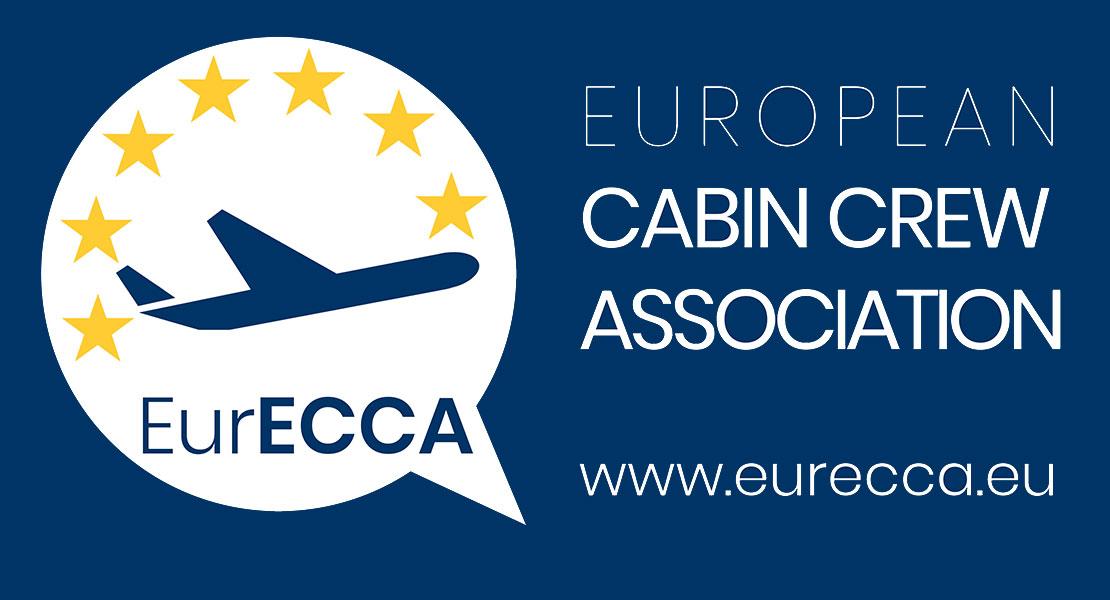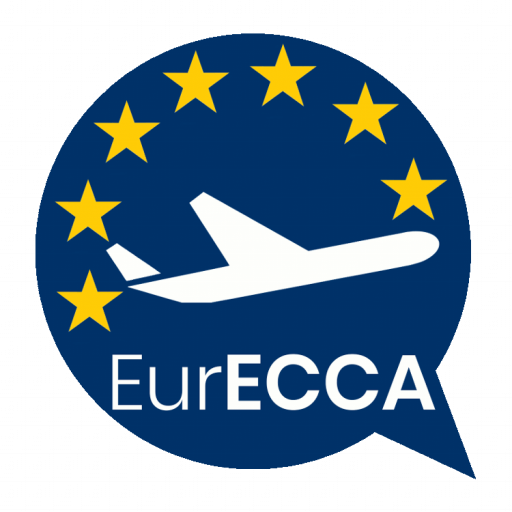“Interoperability” on commercial airlines as a cost-saving business model
EASA’s Best Intervention Strategy (BIS) on AirCrew Interoperability
EurECCA, the European Cabin Crew Association, firmly opposes the introduction of European regulations concerning aircrew interoperability proposed by EASA, the European Union Aviation Safety Agency. EurECCA’s opposition is rooted in the understanding that EASA’s legal mandate, as defined by Regulation (EU) 2018/1139 also known as the Basic Regulation, which outlines EASA’s competencies, is strictly limited to aviation safety, and does not grant EASA any authority over social matters, such as employment conditions, collective agreements, or social security issues. EASA’s proposal to regulate aircrew interoperability oversteps these legal boundaries, as it directly affects employment practices, workers’ rights, and collective labor agreements (CLAs). These areas remain under the exclusive jurisdiction of national and EU social policy under Title X of the TFEU.
At the heart of this debate is EASA’s Best Intervention Strategy (BIS) on Crew Interoperability. As detailed in its 2024 consultation document, it proposes regulatory changes to the Air Ops Regulation (EU) 2012/965 to allow the exchange of aircrews between different airlines within an airline group in Europe, without requiring new approvals each time. The stated objective is to facilitate more flexible operations and ensure safety, while also addressing challenges presented by airline group consolidation and new business models in the aviation industry.
Furthermore, the European Plan Aviation Safety, EPAS 2024-2026 includes strategic priorities to integrate new business models in air operations. This push for aircrew interoperability is framed as part of these new business models, but it is crossing legal lines by interfering with the social conditions of workers in the sector and also raise many questions in terms of safety.
1. Safety Risks
EurECCA has identified numerous safety risks associated with EASA’s interoperability proposal:
- Flight Time Limitations (FTL) and Fatigue: One of the most critical concerns is fatigue risk management, as different FTL regulations across AOCs could compromise crew rest requirements. Fatigue is a significant safety hazard in aviation, and EurECCA argues that interoperability, as proposed, could lead to fragmented scheduling practices, reducing safety standards and increasing the risk of accidents.
- Inconsistent Safety Culture: Ensuring a cohesive safety culture across different airlines operating under various AOCs is extremely challenging. EurECCA asserts that aircrew members operating under multiple AOCs may experience confusion over operating procedures, safety reporting requirements, and performance standards, which could jeopardize operational safety.
- Operational Control: There are concerns that interoperability could result in the operational control of multiple airlines being concentrated within a single entity. This would lead to a loss of oversight, as the integrity of individual safety protocols might be compromised in the name of operational efficiency.
- Work Intensification: Over the last decade research shows an increase in the pace of work imposed in airline transportation. Processes of acceleration, densification and temporal desynchronization are becoming more and more factors in the intensification of work. EurECCA is of the opinion that such work intensifications are a potential stressor, which could harm aircrew. Not only within their profession, which may result in safety errors, but as well as in their social life.
2. Operational Challenges
EurECCA emphasizes that interoperability presents a wide range of operational and procedural challenges, particularly when it comes to maintaining consistency in safety procedures, oversight, and crew training across multiple AOCs. This would create inefficiencies and potentially undermine operational safety:
- Standard Operating Procedures (SOPs): Variations in SOPs between different AOCs could lead to miscommunications or errors in emergency situations. The need for identical SOPs across airlines to ensure consistency in emergency procedures, technical operations, and performance calculations is paramount, and the lack of standardized procedures poses significant risks.
- Oversight Gaps: National Aviation Authorities (NAAs) often struggle with the complexities of overseeing multiple AOCs operating in different Member States. Without harmonized oversight frameworks and cooperative agreements, the interoperability proposal risks weakening regulatory enforcement, resulting in diminished safety standards.
3. Social and Employment Concerns
EurECCA raises significant concerns over the impact of interoperability on labor rights, wages, and employment conditions:
- Aircrew interoperability being a form of employee sharing, would be illegal according to the labor law in many EU Member States.
- Transnational interoperability. It can also be abused to downgrade working conditions.
- Social Dumping: Aircrew interoperability risks creating “letterbox companies”, where airlines exploit weaker labor regulations in certain Member States. By relocating operations to countries with lower labor standards and wages, these companies can undercut competitors, leading to a race to the bottom in employment conditions as well as the absence of clarity on applicable law to aircrew. This would widen competition inequalities across the EU, as airlines could exploit the regulatory differences between jurisdictions and contribute to tax evasion.
- Erosion of Collective labor Agreement: EurECCA firmly believes that the introduction of aircrew interoperability will weaken collective labor agreements (CLAs). With aircrews being moved between AOCs, unions would face difficulties in representing their members, leading to potential erosion of labor protections. Without clear jurisdiction over aircrew members’ labor conditions, employers could avoid negotiating with unions, thereby weakening their power to safeguard workers’ rights.
- Precarious Employment: Aircrew interoperability could lead to fragmented and insecure working conditions. Frequent relocations and varying contracts would result in job instability, reduced benefits, and increased stress for aircrews, undermining the quality of jobs in the aviation industry.
4. Legal and Policy Principles violated by EASA’s Proposal:
- Attribution Principle (Regulation 2018/1139): The attribution principle in EU law states that the EU may only act within the competencies explicitly granted to it by the Member States in the treaties. According to Regulation (EU) 2018/1139, EASA’s competence is limited to aviation safety. Matters related to employment and social rights remain under the control of national governments or EU social policy frameworks. EASA’s attempt to regulate interoperability, which directly affects employment, violates this fundamental principle.
- Subsidiarity Principle: The subsidiarity principle asserts that the EU should only intervene if the objectives of an action cannot be sufficiently achieved by Member States on their own. National authorities are well-positioned to manage labor issues related to aircrew interoperability. EurECCA contends that EASA’s involvement in this area is unnecessary and that labor conditions should be regulated by national governments, not a safety agency like EASA.
- Proportionality Principle: The proportionality principle requires that EU actions must not go beyond what is necessary to achieve their objectives. According to EASA’s own survey, less than 2% of European airlines currently practice aircrew interoperability. This limited use suggests that the introduction of new regulations is unnecessary, especially given the potential negative impacts on employment conditions and workers’ rights. This practice is too marginal to justify sweeping regulatory changes, particularly when those changes could erode hard-won labor and social protections.
5. The Precautionary Principle in EU Law
The precautionary principle, as outlined in Article 191 of the TFEU, requires EU institutions to take measures to prevent potential risks to public health, even when scientific evidence is incomplete. This principle is crucial in managing workplace risks, where preventive actions are required to protect workers from hazards related to their working conditions.
Interoperability business scheme fails to respect the precautionary principle, as it only considers the immediate risks associated with flight safety, while neglecting the long-term risks to workers’ health, such as fatigue, stress, and the cumulative effects of irregular work hours. These risks are well-documented and require specific preventive measures, which are not included in the EASA proposal regulation’s technical framework.
6. Aircrew Interoperability bypasses Directive 2018/957 on Posted Workers
The Directive (EU) 2018/957 on the Posting of Workers establishes conditions to protect workers temporarily employed in another EU Member State, ensuring they receive the same rights and protections as local employees, such as fair wages, working conditions, and social security standards. However, EASA’s proposed aircrew interoperability regulation would allow companies to sidestep this directive by facilitating aircrew transfers across different AOCs without treating them as posted workers.
- Circumvention of Posting Conditions: By defining interoperability as the temporary use of personnel across different airlines under streamlined procedures, the proposed regulation allows companies to deploy workers in countries with lower wage standards, avoiding the legal requirements of posting workers. Under the directive, posted workers are entitled to the same pay and working conditions as local employees, but interoperability would weaken this protection by allowing companies to transfer aircrew members without formally posting them.
- Undermining Social Protections: Workers under aircrew interoperability would not be covered by the same rules on maximum working hours, minimum paid annual leave, or health and safety standards that would apply if they were formally considered posted workers. This effectively lowers the standard of labor protections and encourages social dumping, where companies exploit disparities between Member States’ labor standards to cut costs at the expense of workers’ rights.
- Erosion of National Enforcement: The Directive requires strong national enforcement of labor laws when posted workers are employed, ensuring local authorities monitor compliance with wage and safety standards. Aircrew interoperability could bypass this by transferring employees across AOCs without triggering formal posting mechanisms, weakening national authorities’ ability to enforce their labor laws effectively.
- Fragmentation of Workers’ Rights: Posting workers comes with obligations for the employer, such as notifying the host country’s labor inspectorate and ensuring local labor laws are respected. The interoperability proposal, however, treats aircrew mobility as an operational matter, effectively fragmenting and reducing the rights that aircrew and pilots would otherwise enjoy under the posting Directive.
- Unclear Jurisdiction Over Social Security: The Posting of Workers Directive also ensures that workers temporarily relocated across borders remain under their home country’s social security system. Aircrew interoperability opens the door for companies to argue that aircrew members are not “posted” but simply part of internal group transfers, leading to confusion and potential manipulation of social security contributions.
EurECCA argues that EASA’s aircrew interoperability regulation is also a clear attempt to circumvent the protections provided by Directive 2018/957, allowing employers to relocate workers without respecting the rules on posting, thereby weakening labor rights across the aviation sector and promoting social dumping within the EU. This undermines the principles of fair competition and worker protection within the European Union.
EurECCA’s stance is unequivocal: aircrew interoperability should remain under the domain of social and labor law, managed through national and EU labor policies, not through EASA’s safety regulations. The risks posed by interoperability to social standards, labor rights, and safety are too high to be ignored as they facilitate social dumping and reduce aircrews’ employment security. Governments must prioritize safeguarding workers’ rights, maintaining a fair and competitive aviation market, and ensuring that safety remains paramount over operational efficiency.
EurECCA represents, protects and develops the rights and needs of all cabin crew all over Europe.
FLYING TOGETHER – PROTECTING EACH OTHER
About EurECCA: established in Brussels in 2014, the European Cabin Crew Association, EurECCA, represents, protects, and develops the rights and needs of all cabin crews all over Europe. It is composed of cabin crew unions from European Union Member States as well as accession and bordering states and represents some 33,000 cabin crews accounting for 70% of all organized cabin crew in Europe. EurECCA has no political connections. EurECCA’s work is around Cabin Crews aviation safety standards and requirements, working conditions, social protection and health and safety at work.
EurECCA European Cabin Crew Association AISBL
Avenue Louise 143/4
1050 Brussels, Belgium


